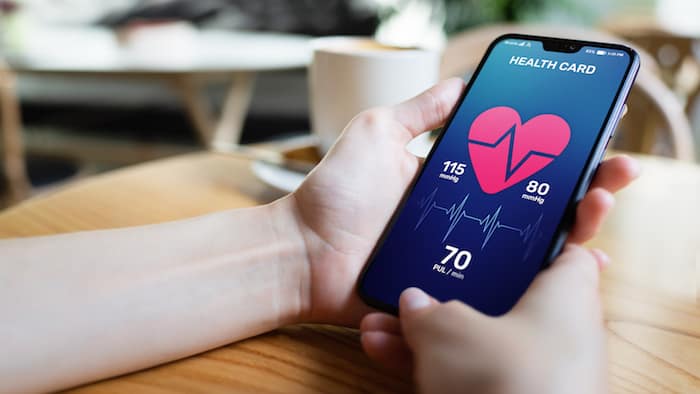As it is today, digitization is happening at a rapid pace across all industries and in all spheres of everyday life. The healthcare industry hasn’t been left behind. It’s actually among the industries experiencing eruption in web and mobile-based applications. There are countless apps in the market because of the benefits they offer to patients and medical professionals.
They make patient care more convenient and lighten the work of doctors and medical practitioners. If you’re considering designing a healthcare app, there are a few considerations you need to make. This article shares six key considerations.
- Type of app and target audience
There are different types of healthcare apps, and each focuses on a particular audience. Although there are a few must have features in your healthcare app, you need a defined target audience to develop the rest of the features. A great way to define your target audience is by deciding on the type of app you want to design. The common healthcare app types include the following:
- Emergency room (ER) care apps: These are patient apps that help patients identify and get directions to the ERs within their vicinity. They also provide information related to these facilities, such as waiting times, travel time, and available insurance options.
- Medication tracking apps: They help patients stick to their prescriptions by reminding them to take medication, tracking dosages to enable them to refill prescriptions on time, and time intervals for the medication.
- General hospital apps: These are mainly used by medical facilities for marketing and branding purposes. They showcase a hospital’s facilities, services, doctors, wait times, etc.
- Lifestyle apps: These apps mainly help patients keep their doctor’s appointments and provide education on healthy living. Pregnancy, baby development, diet, fitness tracking, nutrition, and exercise apps also fall into this category.
- Clinical apps: These apps benefit the medical personnel by providing access to patient electronic health records, such as lab tests and X-ray results. Generally, they provide information about a patient’s possible symptoms.
- Outpatient apps: These apps help a facility continue engaging with their outpatients and making sure they adhere to treatment plans. They also provide patient to patient engagement features—sort of a support group feature.
As you can see above, there are many directions you can follow when designing a healthcare app. You need to pick an audience for your app. Then you can design features that match their needs.
- The mobile platform
When you have a target audience, you can select a mobile platform that is most popular with them. The leading platforms are iOS and Android. Each has its requirements and characteristics. Your choice of a mobile platform is crucial because it determines the budget, app specifics, and future app marketing. (1)

- User Interface and experience design
Both user interface (UI) and user experience (UX) are crucial in healthcare app design and development. This is because healthcare apps are likely to have high usage, depending on the type. You might be designing an app that requires doctors and patients to enter data frequently. Therefore, you must ensure to design the app with an easy-to-use interface.
Make it easy for patients to fill their appointment forms and other details and also for healthcare professionals to update these records. The app needs to create an excellent user experience by executing commands promptly.
- Security and compliance
Telemedicine or healthcare apps have become essential, but they also come with data security concerns. Healthcare also involves sensitive patient information that requires a high level of security. For this reason, there are many guidelines set to ensure that the data on apps isn’t compromised.
You may be aware of the Health Insurance Portability and Accountability Act (HIPAA) and General Data Protection Regulation (GDPR). However, you need to know other platform-based security guidelines, such as human interface guidelines for HealthKit and CareKit for iOS apps and heath documentation guidelines for Android-based apps. Besides, a high level of encryption is required in telemedicine apps. (2)
- Application programming interface (API)
Healthcare faces challenges in data access and sharing. But application programming interfaces can aid in the management of information between diverse systems. APIs are generally used to pass information between data exchange tools such as internal apps and electronic health records. They execute specific tasks with the software. Advertisers and social network apps have long used APIs to pass information continuously. (3)
For example, when you log into an app, the API communicates with a remote server to connect your device. In healthcare and patient engagement apps, you may need to consider additional API components that help authenticate access to health repositories. Also, because not every API is open to third parties, you may need APIs for vendors and suppliers.
Takeaway
These considerations are by no means exhaustive but are all crucial when designing a healthcare app. However, user needs, target audience, usability, and user experience will determine the fate of your healthcare app. In times where users have no shortage of options, only time will tell the actual quality of your app.
References
- “How to Make a Medical App in 2021: The Ultimate Guide”, Source: https://topflightapps.com/ideas/5-steps-to-build-a-healthcare-app/
- “Importance of Data Security For Mobile Healthcare Apps”, Source: https://ziniosedge.com/importance-of-data-security-for-mobile-healthcare-aps/
- “Why Application Programming Interfaces Are Key for Healthcare”, Source: https://hitinfrastructure.com/features/why-application-programming-interfaces-are-key-for-healthcare
Throughout the year, our writers feature fresh, in-depth, and relevant information for our audience of 40,000+ healthcare leaders and professionals. As a healthcare business publication, we cover and cherish our relationship with the entire health care industry including administrators, nurses, physicians, physical therapists, pharmacists, and more. We cover a broad spectrum from hospitals to medical offices to outpatient services to eye surgery centers to university settings. We focus on rehabilitation, nursing homes, home care, hospice as well as men’s health, women’s heath, and pediatrics.







